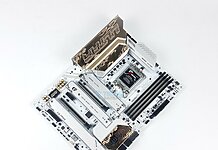Jack Of All Trades
Review Summary
The MSI MPG X870E Carbon WiFi is a high-end motherboard with impressive features, a capable VRM setup, and I/O that should be enough for most users. You get the latest USB4 ports, dual PCIe 5.0 M.2, WiFi 7, and impressive memory support up to DDR5-8400 (OC). It’s a nice-looking board with enough RGB bling for most, but it comes at a staggering $499 price tag. While expensive, it’s competitive enough for the features on offer.
Hours Tested: 11
Overall
-
Performance - 9/10
9/10
-
Value - 8/10
8/10
-
Features - 9.5/10
9.5/10
-
Design - 8.5/10
8.5/10
Pros
- Excellent power delivery with 18x 110A VCore stages
- Sturdy 8-layered PCB
- DDR5 support up to 8400+ MT/s (OC)
- Two beautiful RGB zones
- Plenty of high-speed USB ports (including 2x 40Gbps, 1x 20Gbps)
- Dual LAN ports (2.5G and 5G)
- EZ PCIe release and M.2 installation
Cons
- Pricey
- No 10G LAN port
AMD’s flagship 800-series chipset motherboards are out and about, and we’ve gotten our hands on one of them: the MSI MPG X870E Carbon WiFi. This is the first 800 series motherboard we’re reviewing. The motherboard carries a price tag similar to the MPG X670E Carbon WiFi (at launch) but comes with upgraded VRMs and other improvements to the platform.
Of course, we know that the chipset doesn’t offer anything new other than mandatory USB4, improved memory support, and Ryzen 9000 support out-of-the-box, and you should be, too. In any case, let’s dive into the review!
Key Takeaways
- The MSI MPG X870E Carbon WiFi is MSI’s high-end X870E offering, only behind the GODLIKE, that offers good performance and VRMs, a wealth of convenient features, and I/O that should be plenty for most.
- You should buy the MSI MPG X870E Carbon WiFi if you’re after a high-performance board on which you can overclock, have plenty of USB and storage devices, and/or prioritize easy installation.
- Don’t get the MSP MPG X870 Carbon WiFi if your budget is limited or you expect a 10G LAN port to be part of the package.
Take a look at the specifications:
| CPU Support | AMD Ryzen 7000, Ryzen 8000, Ryzen 9000 |
| Memory Support | DDR5 8400+ MT/s (OC) |
| PCIe Slots | 1x PCIe 5.0 x16, 1x PCIe 5.0 x4, PCIe 4.0 x4 |
| M.2 Slots | 2x PCIe 5.0 (x4), 2x PCIe 4.0 (x4) |
| SATA Ports | 4x 6Gbps |
| Audio | Realtek® ALC4080 Codec |
| Network | 1x Realtek® 8126 5G LAN, 1x Realtek® 8125 2.5G LAN, WiFi 7 |
| USB Ports | 22 ports, including 2x USB 40Gbps Type-C (Rear) |
| Size | 243.84mmx304.8mmm, ATX Form Factor |
Packaging And Unboxing
The motherboard comes shipped inside a standard, fairly colorful cardboard box. Key features being highlighted are WiFi 7 and USB 4 additions, and a warning against ingestion of the CMOS battery.
Let’s take a look inside the box. We get:
- EZ Wi-Fi Antenna
- EZ M.2 Clip II
- EZ M.2 Clip Remover
- 1 to 3 EZ Conn-Cable (V2)
- 1x MSI USB drive (containing drivers and utilities)
- 2x SATA 3.0 cables
- A-RGB extension cable
- 1 to 2 RGB extension cable
- EZ front panel cable extension
- EU Regulatory Notice
- A quick installation guide
- Cable stickers
- A shout-out flyer
I would like to credit MSI for the 1 to 3 EZ Conn cable, which covers the front panel headers, an RGB header, and a PWM fan header. We also get a front-panel cable extension for even better cable management. It should make some of the cable management easier, which we’ll get into in a bit.
Design
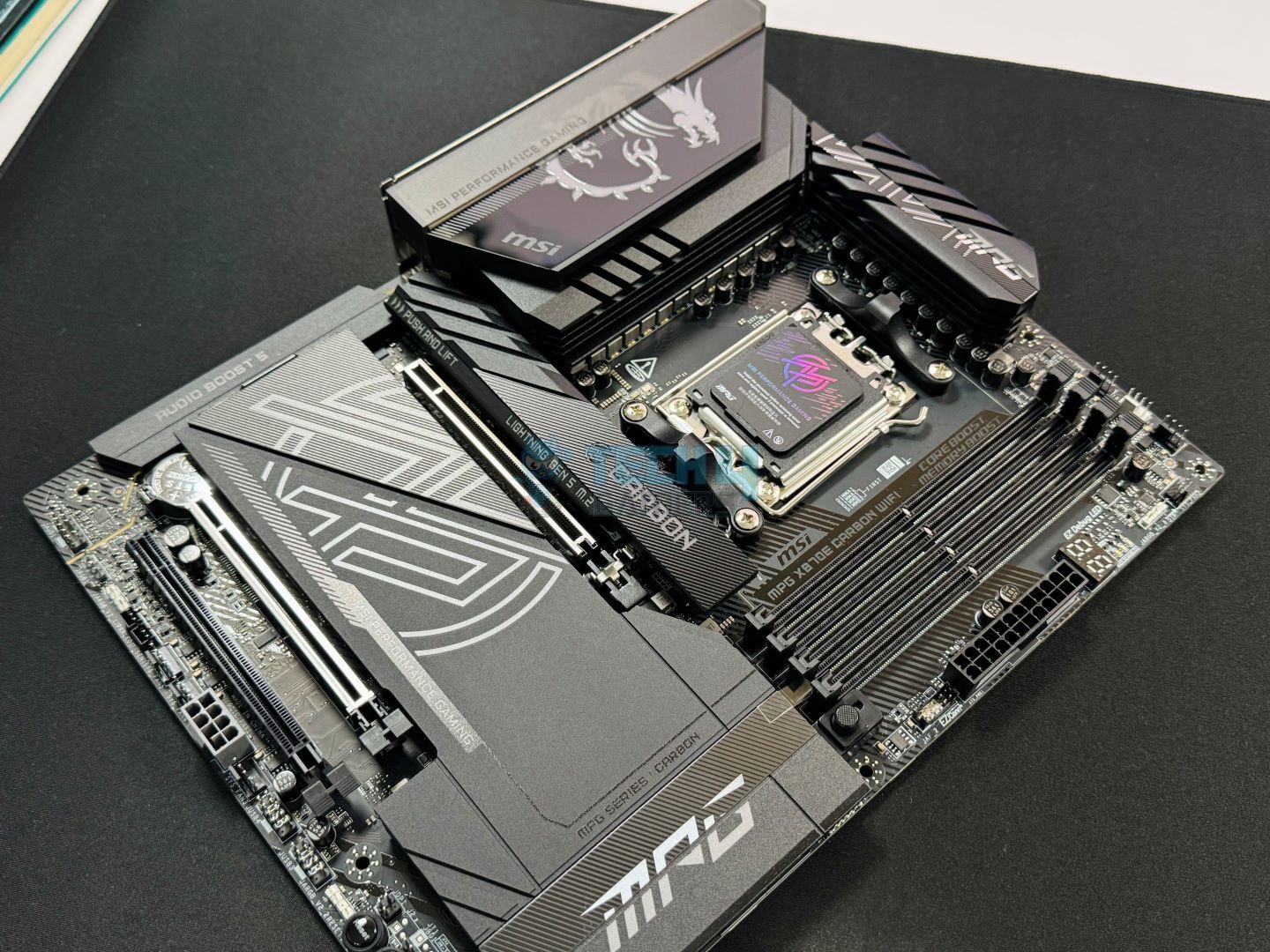
The X870E Carbon WiFi is part of the 800 series chipset, which offers support for the latest Ryzen 9000 series CPUs, as well as Ryzen 8000 and 7000. It consists of 2x Promontory 21 chips. Coming from the chipset are the SATA ports, the majority of the USB ports, the dual LAN ports, and the lower-end PCIe slots.
Meanwhile, the AM5 socket powers the DIMM slots, USB4 controller, HDMI port, and audio. The motherboard features a durable 8-layer PCB using server-grade NPG-170D material that enables ideal transmission speeds. It features over-current protection and transient voltage suppressors (TVS) to protect your components against current and voltage spikes.
We’ll dive into more specific elements of the design, starting with the VRMs.
Power Delivery To Socket
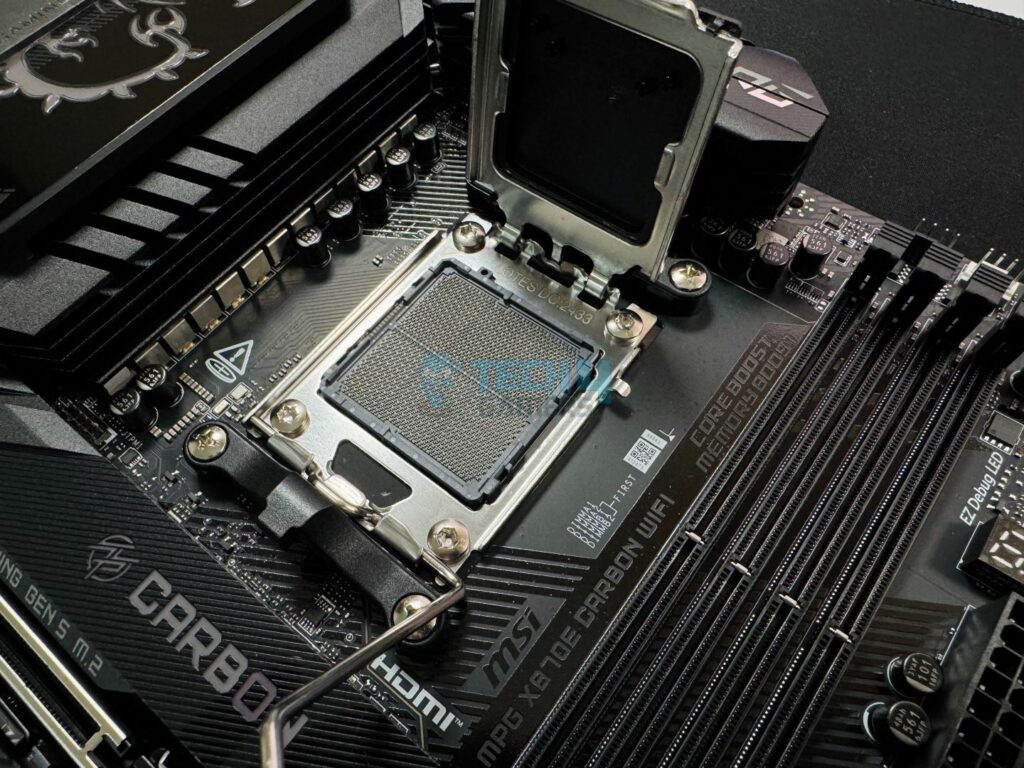
The MSI MPG X870E Carbon WiFi features an 18+2+1 phase design with Smart Power Stages (SPS), with each VCore and SoC stage delivering 110A. R2209004 HBD S2408E2W are the power stages being used for them, while the PWM controller is Renesas RAA 229620. Note that the design is a duet-rail power system (DRPS), meaning that each controller sends signals to two stages at once, eliminating the delay of traditional “doublers.”
The single MOSFET for the misc voltage is Alpha & Omega’s AOZ5516QI. This is a Dr. MOS stage providing up to 55A and is controlled by Realtek’s RT3672EE chip.
That equals 1980A of current for the CPU Vcore, plenty for running the most powerful Ryzen CPUs, even with overclocking. The power supply is connected to the CPU through dual 8-pin EPS connectors.
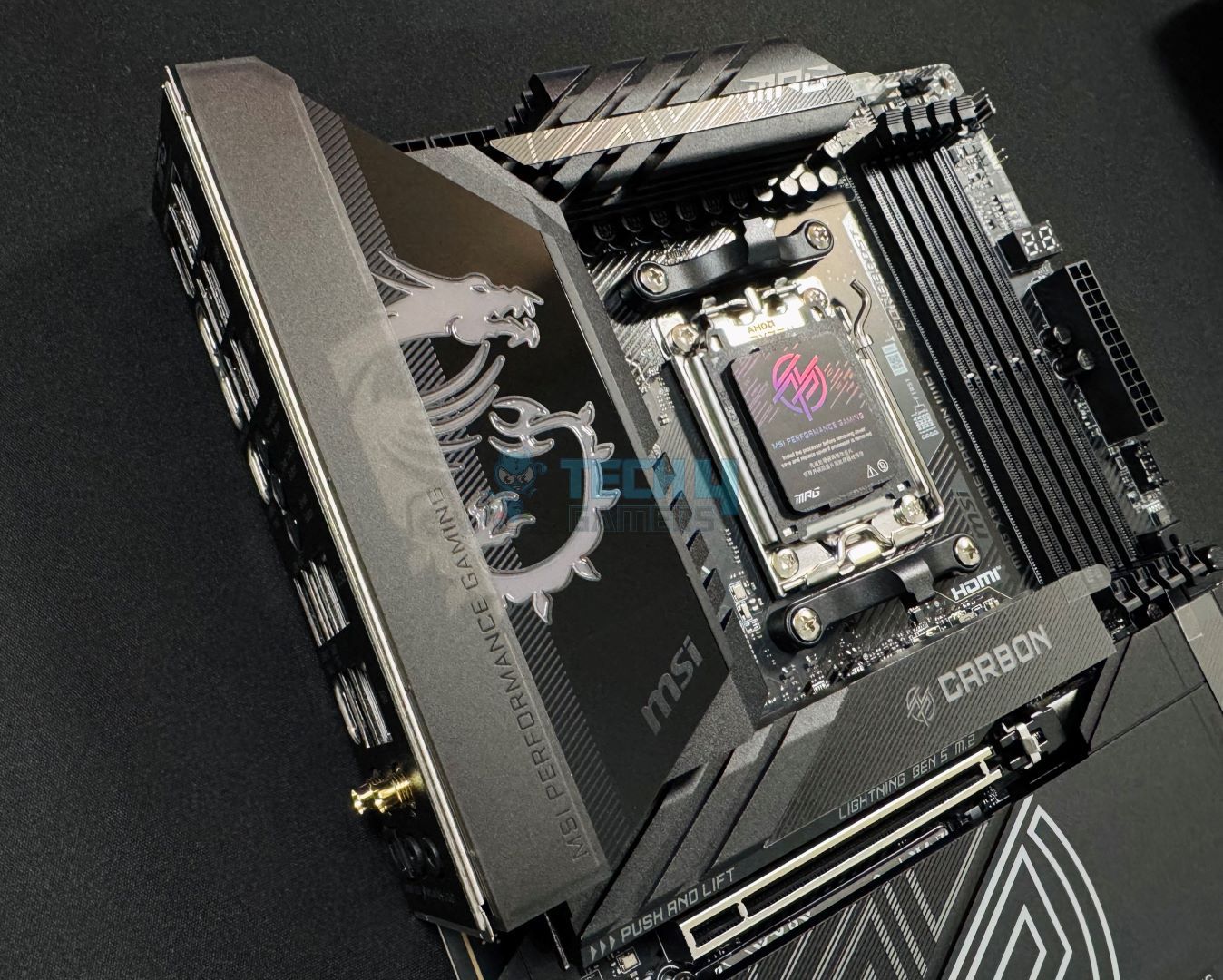
Cooling the beefy VRM setup of the board are the two chunky carbon-black extended heatsinks, both of which are connected by a long aluminum heat pipe. The heatsinks are using a stacked fin design. They also feature 7 W/mK thermal pads. The setup should be more than enough to keep things chill, even under heavy loads. We’ll make sure to test that in a bit.
The heatsinks look neat, with subtle branding and multiple grooves on each of them. I also have to give credit to MSI for the beautifully illuminated dragon logo. This and the second RGB zone seems to be controlled by a microcontroller named “NUC1262Y.”
DIMM Slots
To the right, we have four DIMM slots, each capable of 64 GB for a total of 256 GB supported. The speed support is up to 8400+ MT/s (OC)(single-rank at 1 DIMM per channel) as we begin to push past 8000 MT/s with the Ryzen 9000 series.
These DIMM slots are soldered onto the PCB using Surface mount technology. They, of course, support EXPO, dual-channel mode, and non-ECC memory. Also, there’s support for CUDIMM, but only with Clock Driver bypass enabled. The clock driver is the main advantage of CUDIMMs, so there’s not much to be excited about yet, as the CUDIMM will function as a UDIMM without the driver.
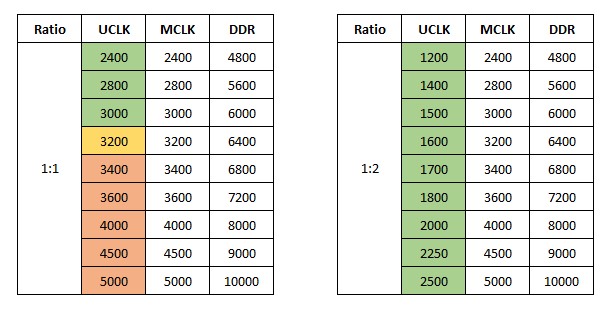
What You Should Know About Ryzen 9000’s Memory Support
With the Ryzen 9000, AMD has tuned its memory controller slightly to allow for improved memory support. This not only means better JEDEC and EXPO speeds being supported, but the “sweet spot” for DDR5 memory can now be considered as DDR5-6400 at a 1:1 ratio between memory and the controller.
Whether or not you’ll be able to run your particular RAM at DDR5-6400 (1:1) will depend on your luck in the silicon lottery (with our 9950X, we couldn’t). In any case, though, it’s the ideal speed in a best-case scenario. Beyond it (or beyond 6000 MT/s if you’re not lucky enough), the ratio switches to 1:2, which introduces latency, and hence, those higher memory speeds really won’t be that beneficial.
– Dr. Usman Saleem
Storage
The motherboard supports 4x SATA 3.0 ports, all coming from the chipset. There’s also room for 4x M.2 drives; the top two come from the CPU and the bottom ones from the chipset. All the M.2 slots will be cooled by MSI’s signature M.2 double-sided Frozr heatsinks. Double-sided here means that there are thermal pads on both ends.
Slots #1, #2, and #4 support 2280/2260 SSDs, while the third slot can support either 22110 or 2280 devices.
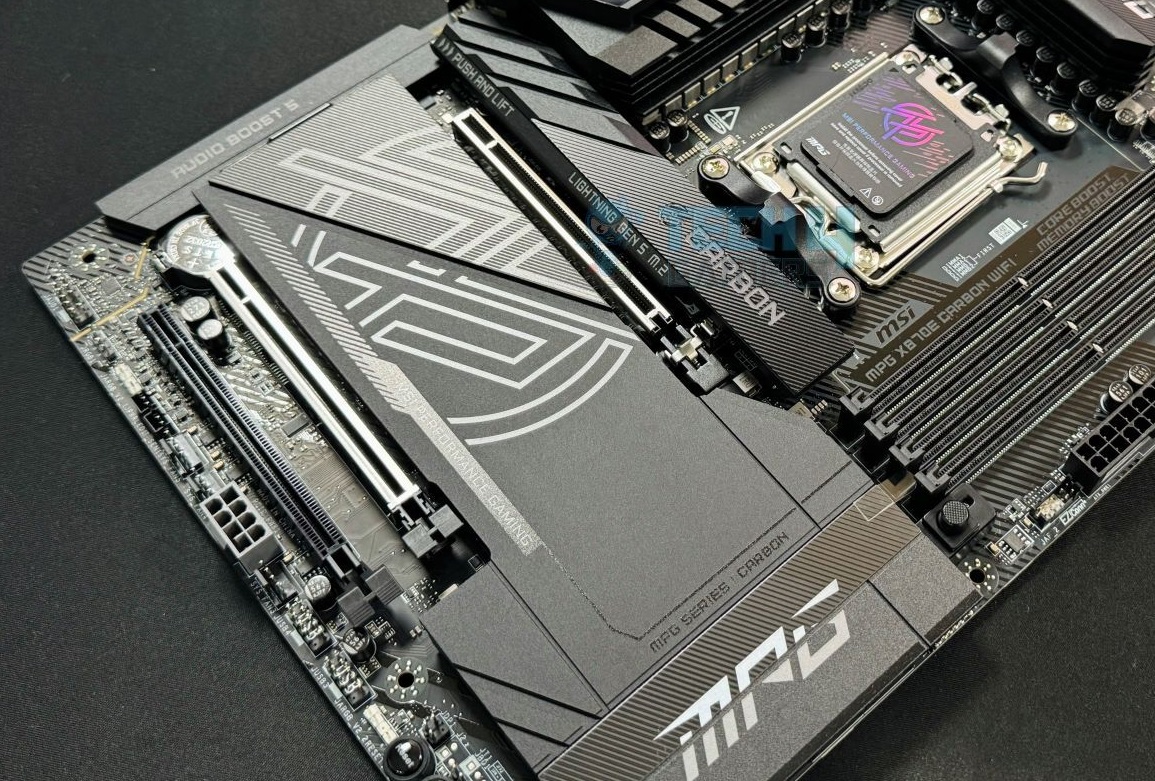
Both the primary and secondary heatsinks feature incredibly convenient “EZ” removal and installation mechanisms. You don’t even require both hands! I have to say, I’m a fan of MSI’s commitment to making installation and removal mechanisms a breeze, and it’s also something for PC-building newbies to appreciate.
Both the heatsinks look nice in carbon black. The primary M.2 heatsink features RGB lighting on the MPG logo and the “Carbon” text and also has channels on the left side. The other heatsink, cooling the remaining three slots, features an enlarged MPG logo, and a groove in between divides it into two colors. A nice look.
We also get an M.2 clip II that makes SSD installation quite convenient. The included clip remover allows you to remove the clip and install it on another slot if needed.
PCIe Slots
Here, we can spy the 3x PCIe slots, which, from top to bottom, are PCIe 5.0 x16 (CPU), PCIe 5.0 x4 (CPU), and PCIe 4.0 x4 (chipset). The first two PCIe slots are metallic. Note that the bandwidth is shared between the two PCIe slots coming from the CPU (E1 and E2) and the M.2_2 slot (also coming from the CPU).
For the Ryzen 9000/7000 series, if the PCIe 5.0 x8 and M.2_2 slots are utilized, then the primary PCIe 5.0 slot will operate at PCIe 5.0 x8 (instead of x16). The primary PCIe slot uses Surface Mount Technology (SMT) and is built on MSI’s Steel Armor II, which offers enhanced weight endurance.
On the right, we can see the EZ PCIe latch for the primary PCIe slot. Removing your GPU from a tight space is a breeze; all you need to do is press the button!
USB Connectivity
You get a total of 22 USB ports with the MPG X870E Carbon WiFi, including:
- 4x USB 2.0 (Front)
- 4x USB 5Gbps Type A (Front)
- 9x USB 10Gbps Type A (Rear)
- 2x USB 10Gbps Type C (Rear)
- 1x USB 20Gbps Type C (Front)
- 2x USB 40Gbps Type C (Rear)
The USB4 connections are provided by, of course, ASMedia’s ASM4242 chip, and 4x of the USB 10Gbps Type-A connectors come back from Realtek’s RTS5420 chip. Under the primary VRM heatsink is another heatsink tasked with cooling the USB4 controller. Six of the USB 10Gbps Type-A ports in the rear come from a secondary, removable PCB on the board.
Network and Connectivity
The motherboard comes with dual LAN ports: 5G and 2.5G, powered by Realtek’s 8126 and 8125 controllers, respectively. You get WiFi with the wireless module, which supports WiFi 7 (Windows 11 24H2 and onwards). MU-MIMO transmission and reception are supported. Older WiFi standards (2.4GHz/ 5GHz/ 6GHz) will work just fine, too.
Bluetooth 5.4 is supported, and it requires Windows 11 24H2. Multi-link operation (MLO) and 4K QAM modulation support are available.
Audio Solution
The motherboard uses Realtek’s ALC4080 chip as its audio solution, a chip we’ve seen in many mid-to-high-range motherboards. Two separate PCB layers feature the left and right audio channels for an isolated signal. The audio comes from the chipset but is connected through a USB bus rather than the traditional direct connection.
7.1 surround sound is supported, and up to 32-bit/384kHz output is supported through the front panel jacks.
Internal Connectors
Pictured below are the 24-pin ATX connector and the debug LED panel. In front of the DIMM slots are two of the fan connectors and a pump connector. Beside the CPU_FAN 1 connector, we have Nuvoton’s NCT39482S whose function is to drive the fan. Meanwhile, we spy Nuvoton’s NCT3961S chip beside the PUMP_SYS1 connector which regulate voltage and also provides overcurrent protection.
We have the following connectors:
- 1x Power Connector(ATX_PWR)
- 2x Power Connector(CPU_PWR)
- 1x Power Connector(PCIE_PWR 8pin)
- 1x CPU Fan
- 1x Combo Fan (Pump_Sys Fan)
- 5x System Fan
- 1x EZ Conn-header (JAF_2)
- 2x Front Panel (JFP)
- 1x Chassis Intrusion (JCI)
- 1x Front Audio (JAUD)
- 1x Thermal Sensor connectors(T_SEN)
- 3x Addressable V2 RGB LED connector (JARGB_V2)
- 1x RGB LED connector(JRGB)
- 4x USB 2.0 ports
- 4x USB 5Gbps Type A ports
- 1x USB 20Gbps Type C ports
- EZ Debug LEDs
- Debug LED panel
For troubleshooting, the motherboard features LEDs and has a debug LED panel (which can also function as a temperature monitor).
NUVUTON’s NCT6687D serves as the main controller chip on the board. Its main function is hardware monitoring (voltages, temperatures, and fan speeds).
Rear I/O Panel
On the rear, we get:
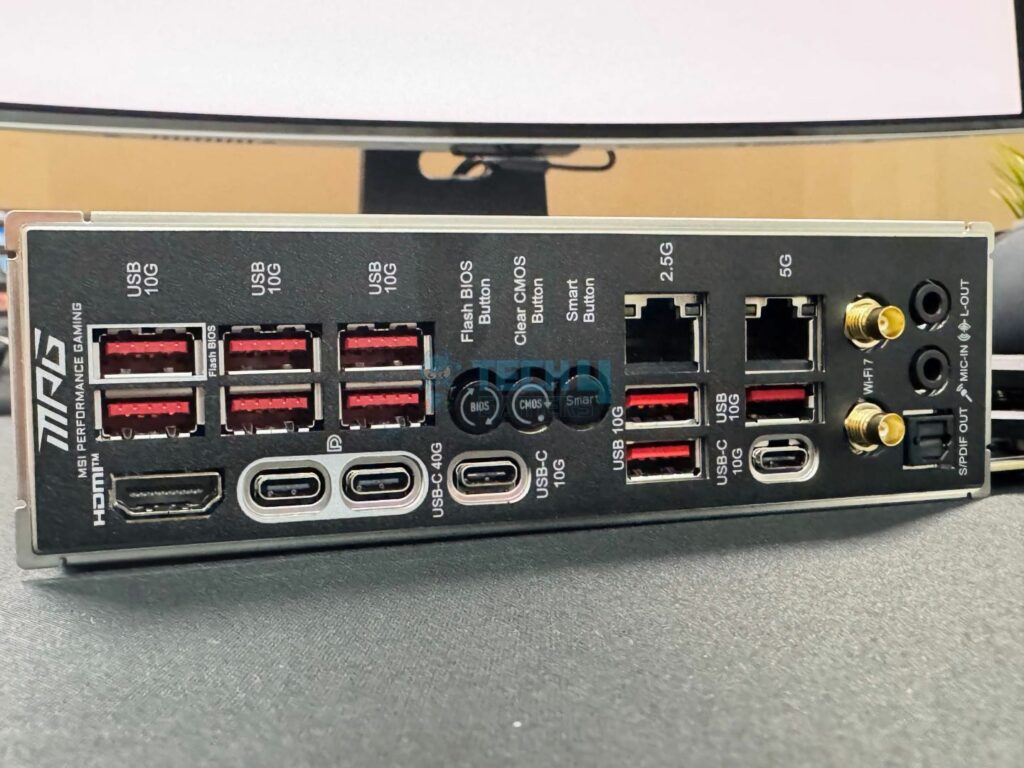
- USB 10Gbps Type-A
- Flash BIOS Button
- Clear CMOS Button
- Smart Button
- 2.5G LAN
- 5G LAN
- Audio Connectors
- HDMI™
- USB 40Gbps Type-C
- USB 10Gbps Type-C
- USB 10Gbps Type-A
- USB 10Gbps Type-C
- Wi-Fi / Bluetooth
- Optical S/PDIF Out
The I/O shield is anti-corrosive and comes pre-installed. As usual, the Smart button serves as a restart button by default. However, you can reprogram it to control the onboard RGB, safe-boot your system, or enable/disable turbo fan mode through the BIOS.
There’s no 10G LAN port, which is disappointing considering the price. Although we understand that a 10G LAN port would require even more cooling on the board, at $499, we can’t be wronged for expecting it.
Our Test Bench
Have a look at our test build and configurations:
- AMD Ryzen 9 9950X 16C/32T
- ARCTIC Liquid Freezer II 420 Liquid CPU Cooler
- G. Skill Trident Z5 Royal NEO DDR5-6000 CL28 EXPO Kit (2×16 = 32GB)
- XPG Lancer RGB 32GB 7200MHz DDR5 RAM
- Nvidia GeForce Gigabyte RTX 4090 Gaming OC
- Western Digital SN850 Black 500GB NVMe SSD [For OS]
- Sabrent Rocket 4 Plus 2TB Gen4x4 NVMe SSD [For Software]
- Sabrent Rocket 4 Plus 4TB Gen4x4 NVMe SSD [For Games]
- Sabrent Rocket NANO V2 4TB Portable SSD
- Corsair HX1200i Platinum PSU
- Windows 11 Pro Build 23H2
- BIOS Version 7E49v1A12
- AGESA 1.2.0.2 firmware
Synthetic Benchmarks
Gaming Benchmarks
Boot Time
The X870E Carbon WiFi is among the quickest boards in Windows 11 boot time.
VRM Temperatures and Power Consumption
For VRM temperatures, our MSI board maxed out at 57°C during the Cinebench run. The temperatures are well in the safe range, so there’s nothing to worry about. MSI has done a great job with the cooling design.
As for CPU and motherboard power consumption, the MSI X870E Carbon WiFi is among the top three hungriest motherboards.
Should You Buy It?
Let’s break it down.
Buy It If:
✅You’re seeking a stylish motherboard: The motherboard features a beautiful black theme and RGB that provides the perfect amount of illumination.
✅You need plenty of USB connectivity: The MPG X870E Carbon WiFi should fulfill your USB connectivity needs, no matter how excessive. It has 22 ports, including 2x 40Gbps Type-C, 1x 20Gbps Type-C, and 11 10Gbps.
✅You prioritize convenience: The motherboard offers plenty of features for convenience, including the pre-installed I/O shield, EZ PCIe release, the debug-led panel, and one-click overclocking.
✅You’re looking for excellent memory support: The memory support of DDR5-8400+ (OC) is class-leading for the chipset.
Don’t Buy It If:
❌You want a 10G LAN port: Despite its $499 price tag, no 10G LAN port is available.
My Thoughts
The MSI MPG X870E Carbon WiFi is MSI’s new high-end board for the new chipset, standing only behind the MEG X870E GODLIKE. With that, it offers a fairly premium feature set that sits behind only the GODLIKE. For the VRMs, we get an 18+2+1 duet rail power system with 110A smart stages. The setup is plenty for any Ryzen CPU and is cooled well by the extended VRM heatsinks.
In the aesthetics department, we get a mostly “carbon” black theme with hints of grey. There are two RGB zones: one for the MSI dragon logo atop the I/O heatsink and the other for the primary M.2 heatsink. The look is quite nice, but I would have liked less branding across the board.
On the connectivity front, the motherboard has dual PCIe 5.0 slots (x16 and x4) and a PCIe 4.0 x4 slot, providing plenty of bandwidth for any add-on cards you may have. The primary PCIe slot is built on MSI’s Steel Armor II and is very durable, enough for even the heaviest cards.
There are 4x M.2 slots (2x 5.0, and as many as 4.0) and 4x SATA ports. All the M.2 slots are cooled by MSI’s Shield Frozr heatsinks with double-sided thermal pads. The heatsinks are decent enough (just make sure your chassis’ airflow is good) and are easy to remove and install, courtesy of MSI’s “EZ” designs. It was extremely easy to work with and set up with this and plenty of other mechanisms (pre-installed I/O shields, Smart Button, EZ-Conn, and more).
There are plenty of USB ports (22x) in total, and of course, we get 2x USB4 slots thanks to ASMedia’s ASM4242 chip. That’s plenty for even the most demanding users. Realtek’s ALC4080 chip powers the audio solution and should be adequate for casual users. There are dual LAN ports (2.5G and 5G), but it would have been nice to see a 10G one at this price.
The MPG X870E Carbon WiFi is priced at $499 and is in the high-end (but not top-of-the-line) range of X870E motherboards. We’re thankful to MSI for sending us this model for review.
Community Poll
Thank you! Please share your positive feedback. 🔋
How could we improve this post? Please Help us. 😔
[Reviews Specialist]
Usman Saleem brings 8+ years of comprehensive PC hardware expertise to the table. His journey in the tech world has involved in-depth tech analysis and insightful PC hardware reviews, perfecting over 6+ years of dedicated work. Usman’s commitment to staying authentic and relevant in the field is underscored by many professional certifications, including a recent one in Google IT Support Specialization.
8+ years of specialized PC hardware coverage
6+ years of in-depth PC hardware analysis and reviews
Lead PC hardware expert across multiple tech journalism platforms
Certified in Google IT Support Specialization
Get In Touch: usman@tech4gamers.com


 Threads
Threads
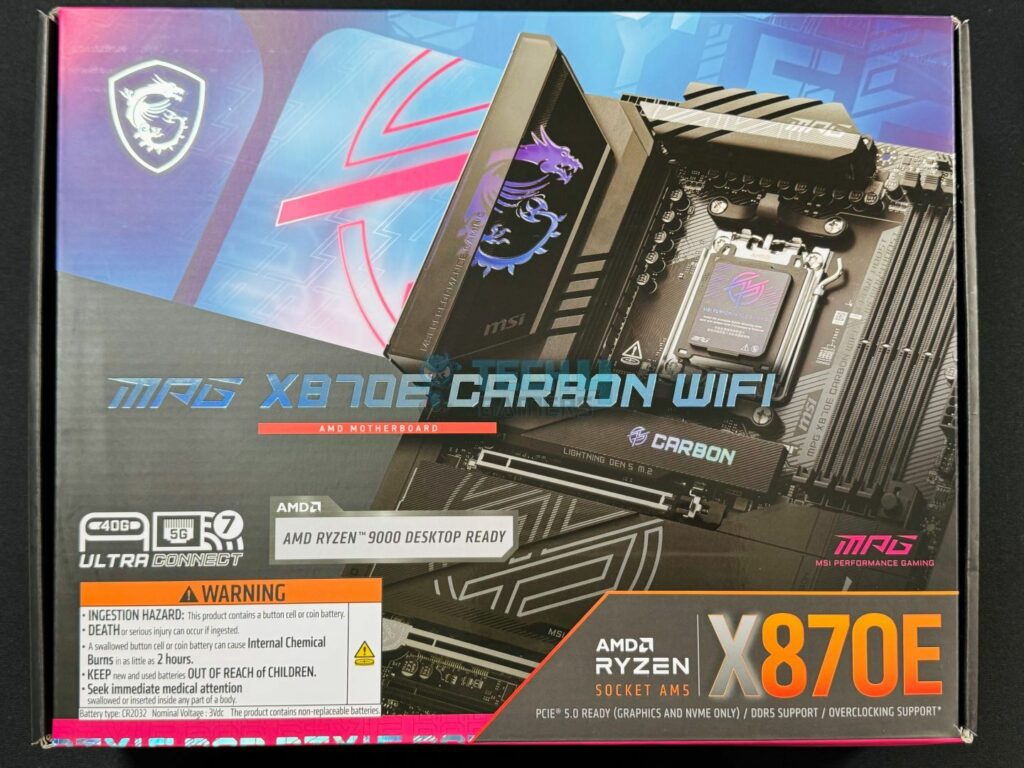
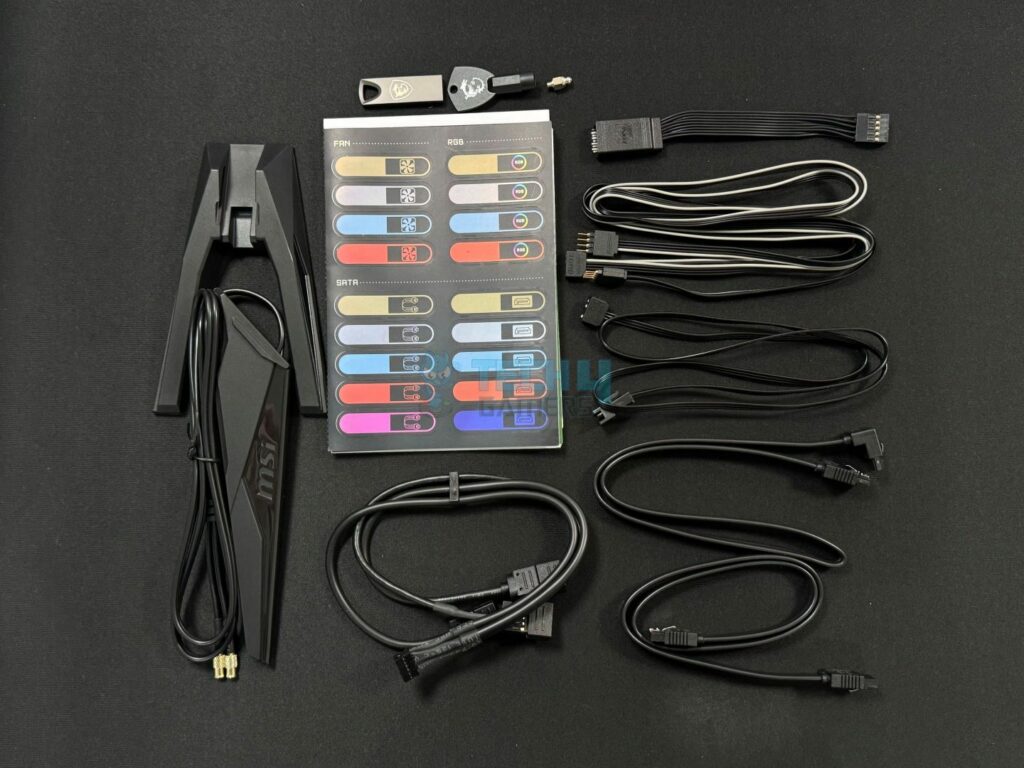
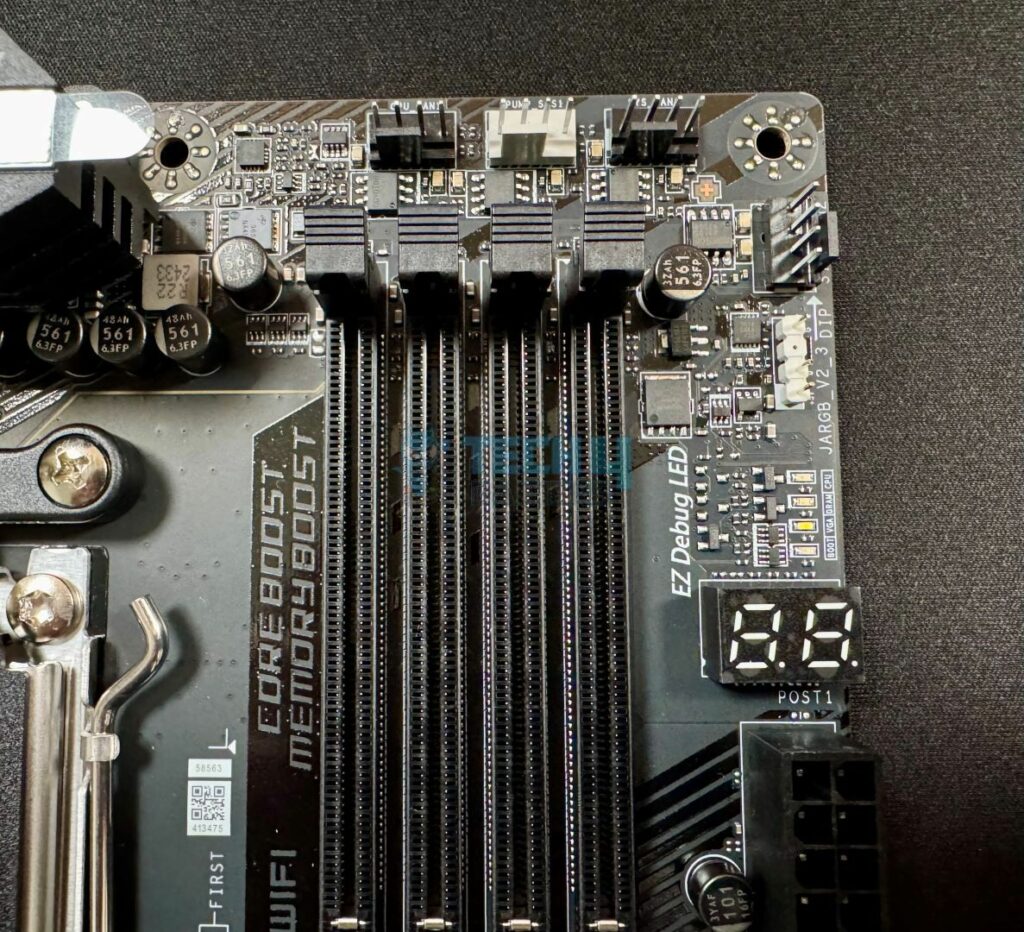
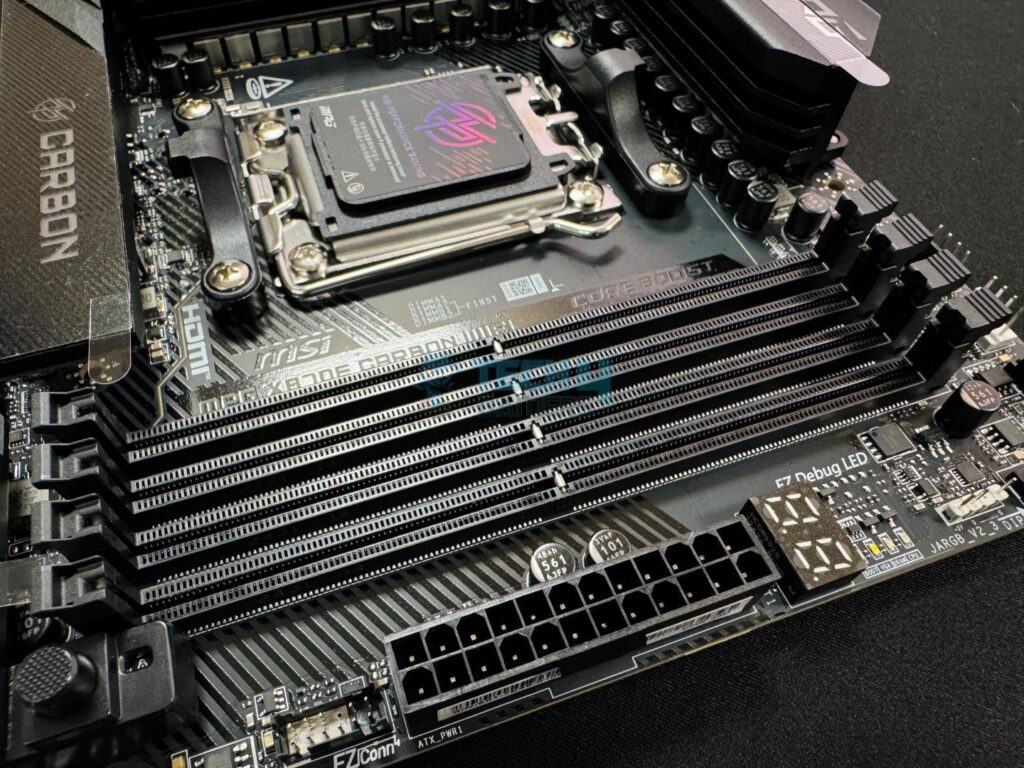
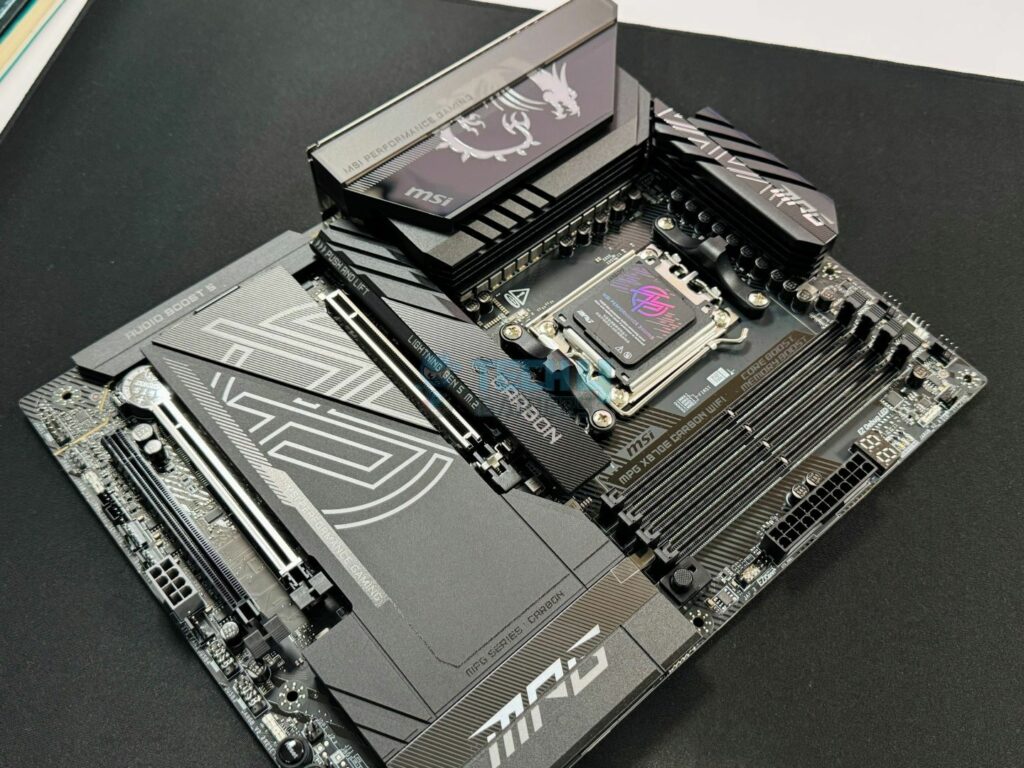
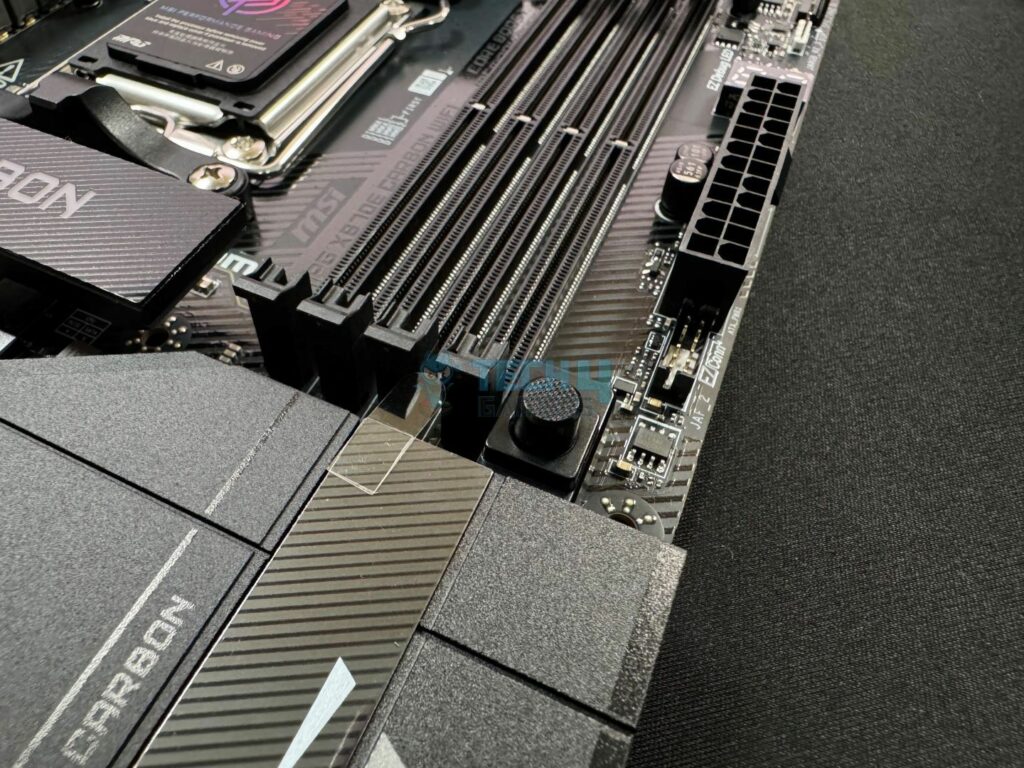
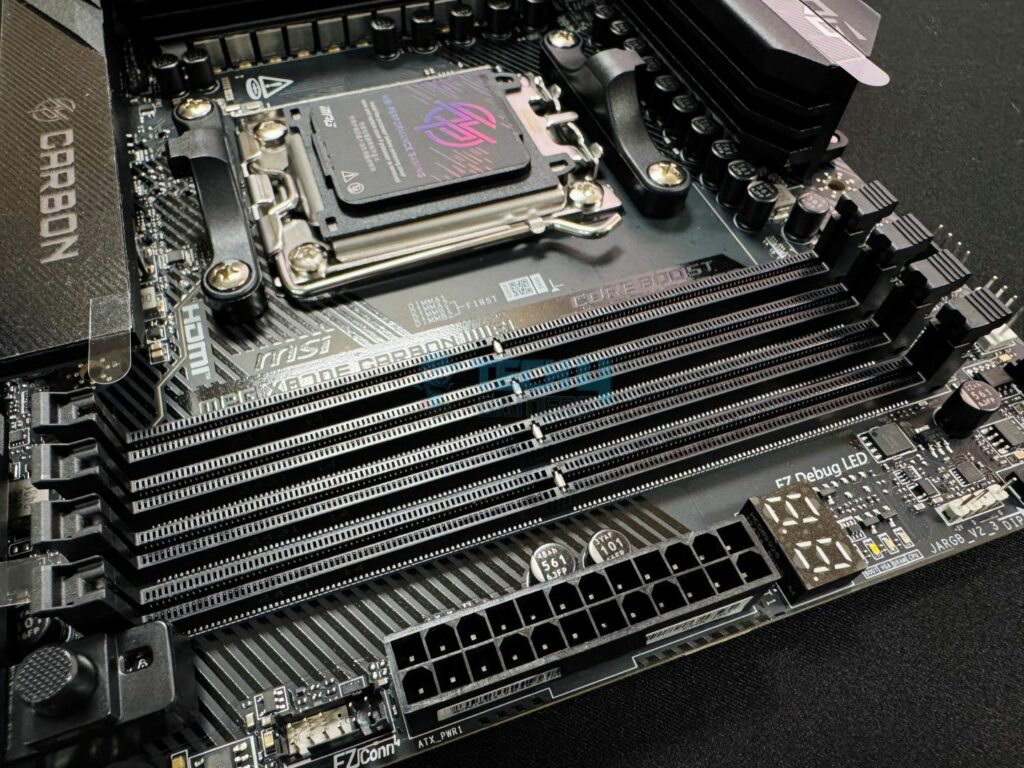
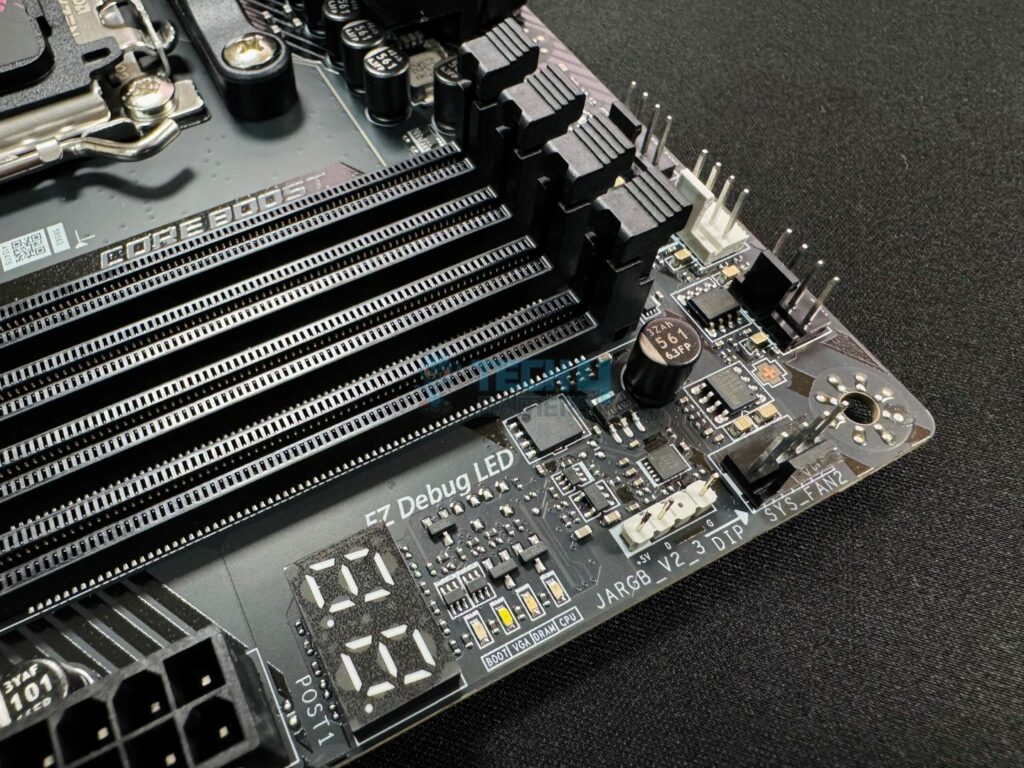
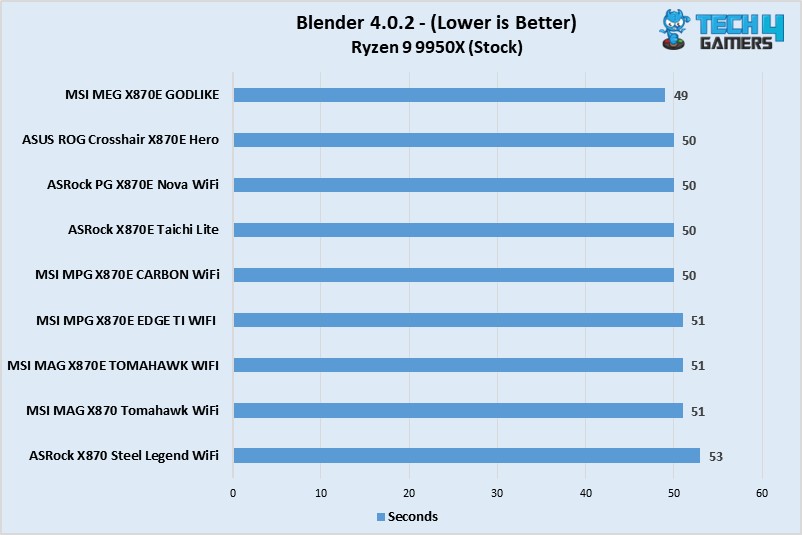
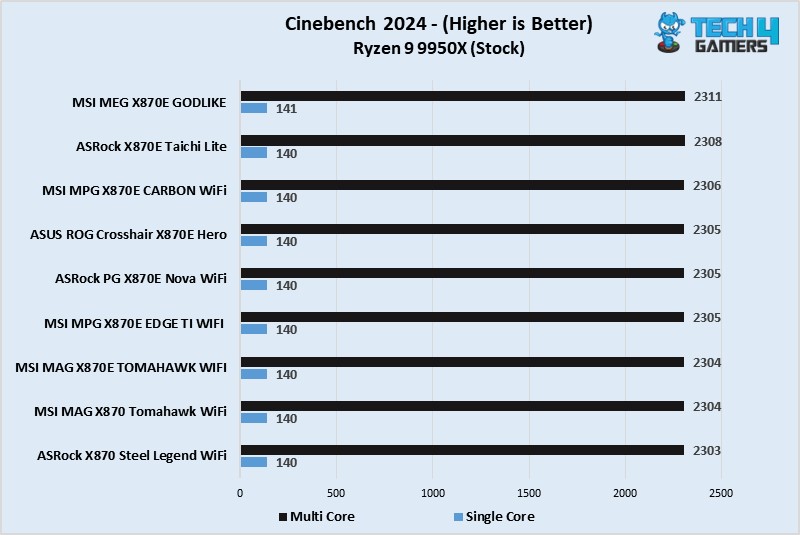
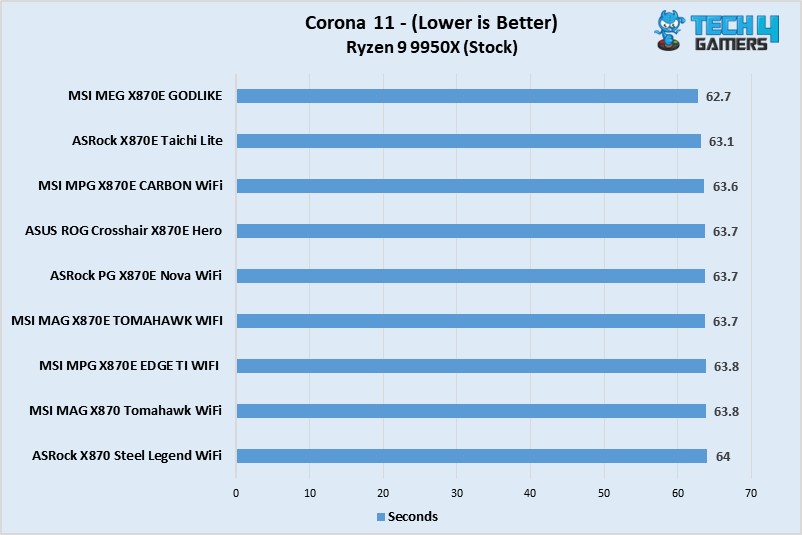
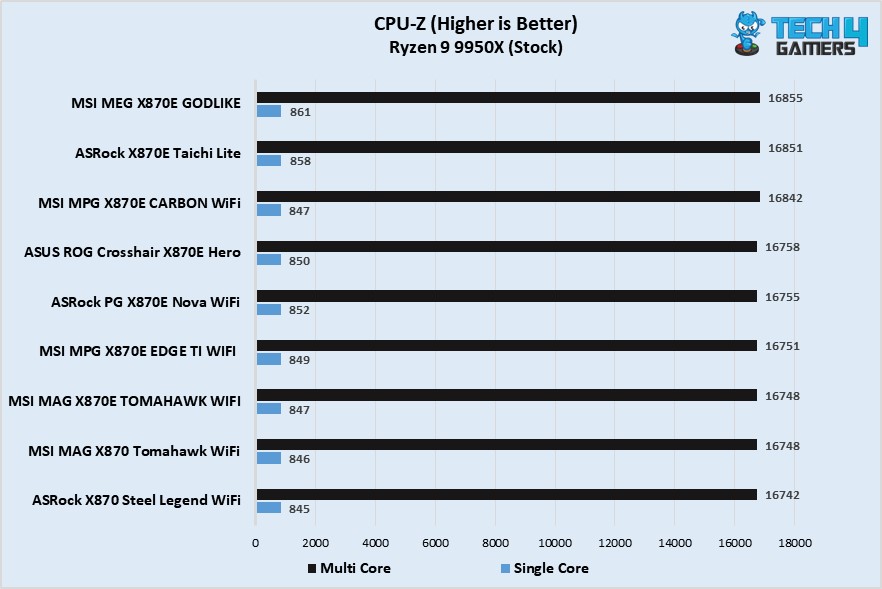
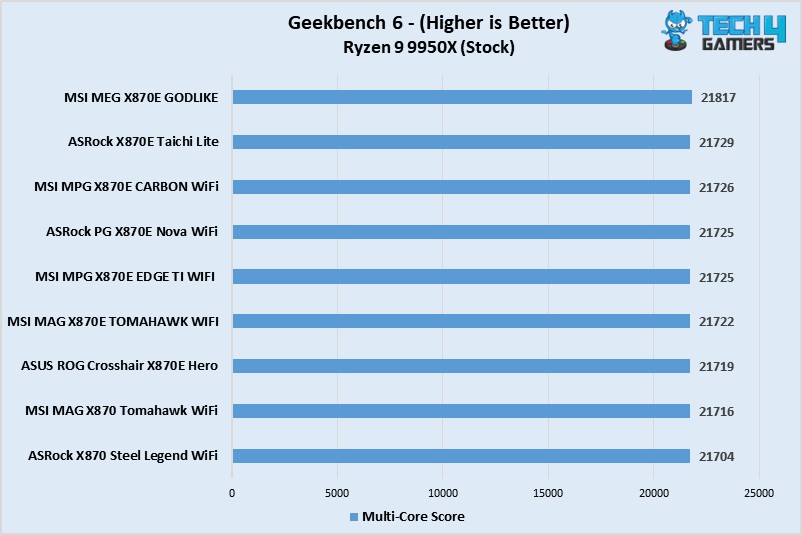
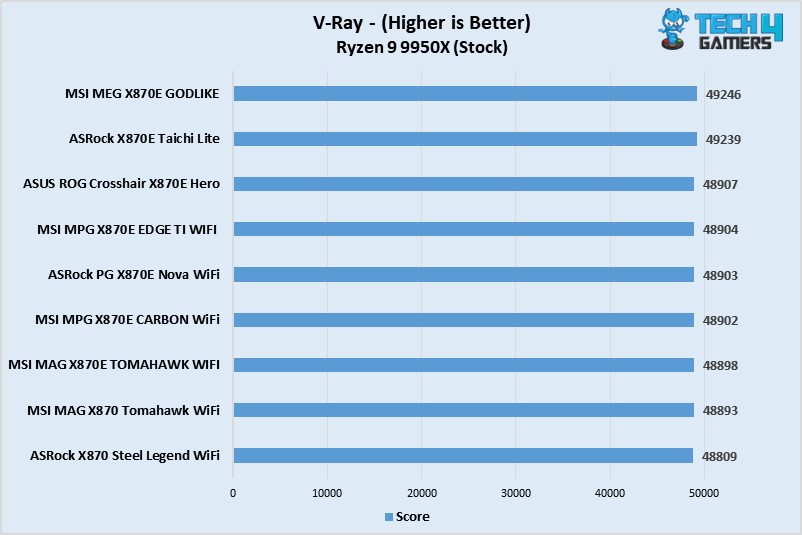
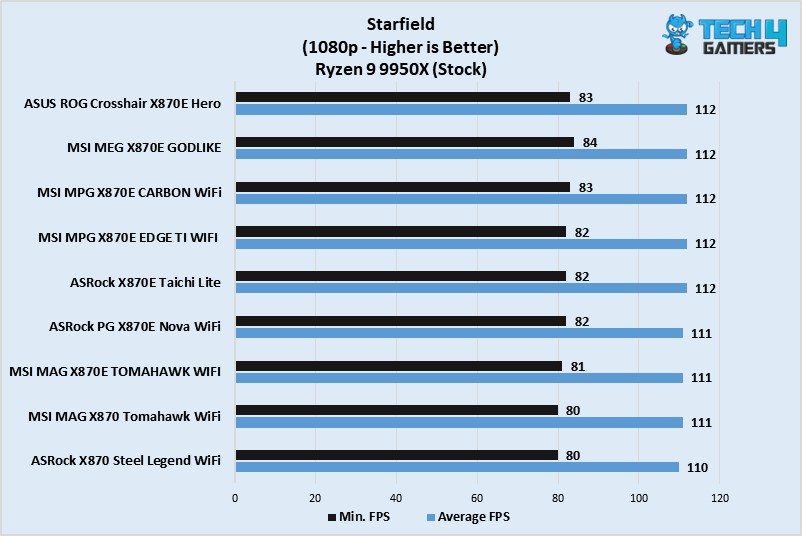
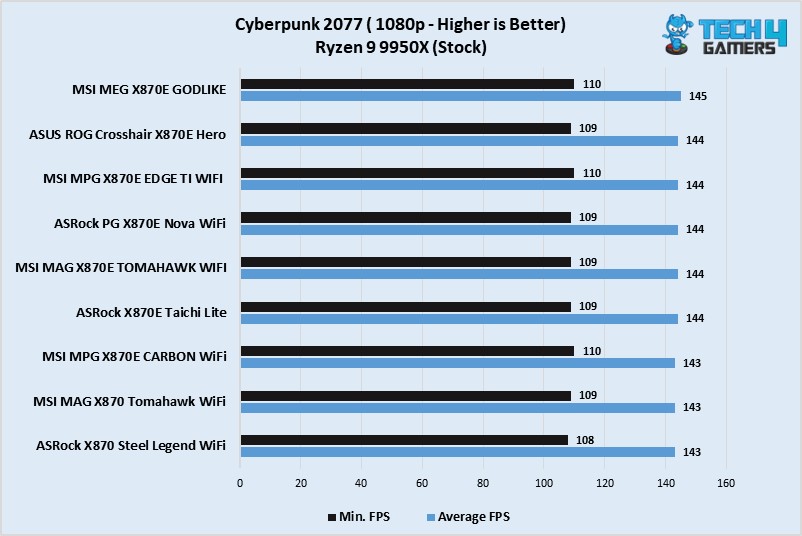
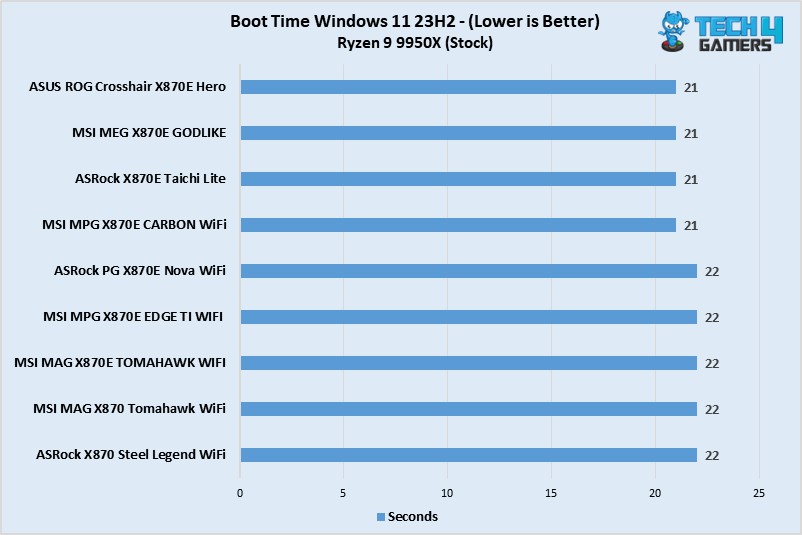
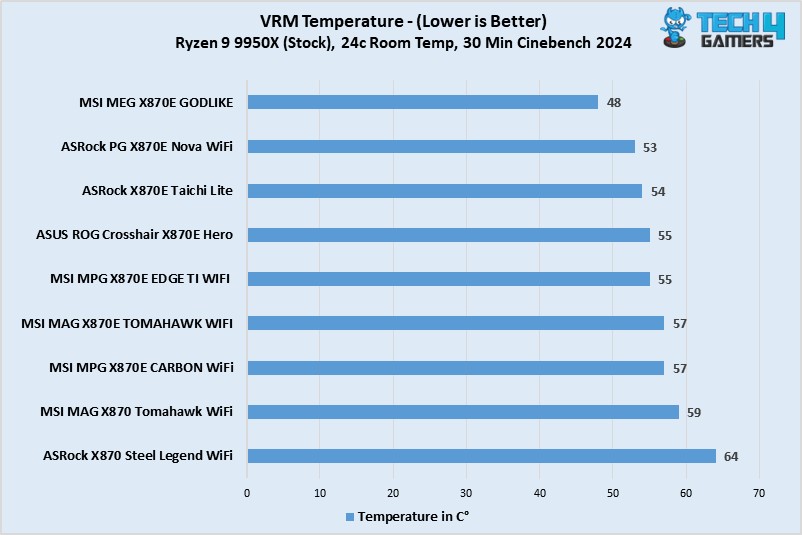
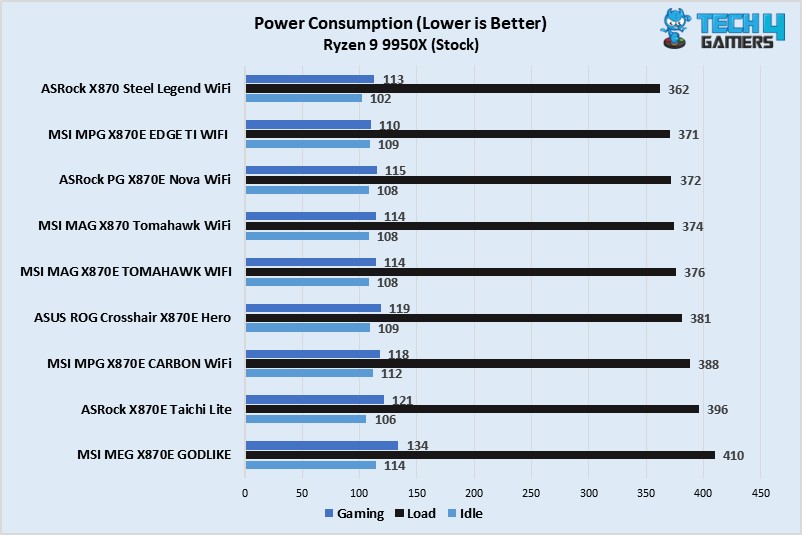
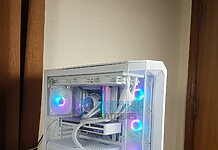
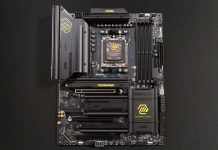
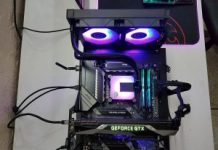
![6 BEST Motherboard For Ryzen 7 5800X [Our Recommendations] BEST Motherboard For Ryzen 7 5800X](https://tech4gamers.com/wp-content/uploads/2022/06/BEST-Motherboard-For-Ryzen-7-5800X-218x150.jpg)
